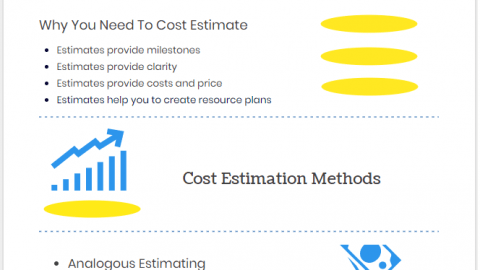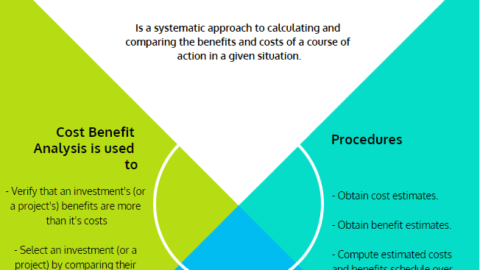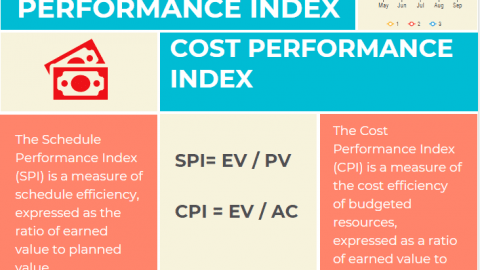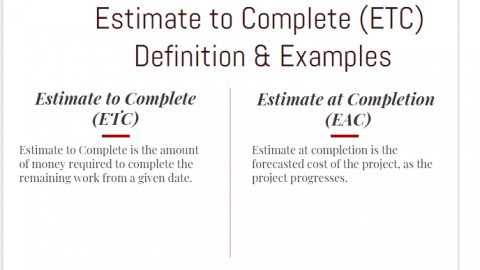A Complete Guide to Working Capital; Definition and Examples
Working Capital Defined – During your business career, you have likely run into the term WC more than a few times. But do you know what it really is, and why it’s important to know? The working capital formula measures the difference between your current assets and current liabilities. It is an important indicator of a business’s success and projected long-term growth. As a manager or a coordinator, it’s essential to have comprehensive knowledge of WC. You need to know what it is, how to calculate it, and in what situations having negative working capital is acceptable. In this blog post, we will talk about this important financial term and provide you an infographic. Keep reading for a complete guide to working capital to understand the concept with examples.
Table of Contents
Working Capital Defined
Working Capital Defined – WC, sometimes called Net WC (NWC), measures the differences between what you own and what you owe. It helps measure your short-term health and liquidity and is an indicator of whether you would be able to pay off debts within a fiscal year.
Calculating WC has two major components: current assets and current liabilities. Current assets are owned by the company and can be liquidated for cash, and include accounts receivable, stocks & bonds, checking & savings accounts, and inventory. Current liabilities are the company’s expenses and include dividends payable, accounts payable, rent, salaries, and income tax.
Negative Working Capital
Negative WC is when your current liabilities exceed your current assets. Although this is typically not a good sign, some industries, like fast-food chains, often have Negative Working Capital because of the pace at which they move inventory. However, Negative Working Capital can also be a transitory state for your business.
If you have a significant increase in accounts payable, you may have a Negative WC until the debt is paid off. If it is not normal for your industry, Negative WC can be a sign of company liquidity and potential bankruptcy, so it is important to try to handle it immediately.
Working Capital Formula
WC can be determined in two ways: the formula for WC and for the current ratio. The working capital formula tells you your short-term liquidity and ability to pay debts, while the current ratio gives you an idea of where your WC falls compared to the industry average. As a general rule for the current ratio, a higher ratio is better, but the number you should be aiming for is contingent on your industry average. If your ratio is significantly above the industry average, this may signal to stakeholders that you are using your assets irresponsibly.
Working Capital Formula
- WC = Current Assets – Current Liabilities
- Current Ratio = Current Assets / Current Liabilities
Working Capital Example
In this Working Capital Example, we will take a look at the case of ABC Construction Ltd. It had a WC of $200,000 when it started its business operations in 2010. Its current assets were $230,000 and current liabilities were $30,000. In the course of time, ABC Construction Ltd increased its inventory and kept more cash in reserve. As of today current assets averaging $350,000 and current liabilities averaging $50,000.
- WC = $350,000 – $50,000 = $300,000.
- Current Ratio = $350,000 / $50,000 = 7
In this working capital example, WC is $300,000 and Current Ratio is 7.
How Much Working Capital Should you Have?
Different industries have different benchmarks for WC. Companies that move products quickly, such as grocery stores, have low or negative WC because the product is sold in their store often before the vendor is even paid. Conversely, companies with large physical inventories typically require higher amounts of WC.
However, it is crucial to remember that having an excess amount of WC compared to industry norms can be a warning sign for investors—it can tell them that you are not efficiently using resources or are being too conservative with your financial operations.
Do you Need More WC?
Your ideal level of working capital differs depending on the industry, but there are some common reasons that your business might need to have more WC, including:
- Preparing for emergencies: Although our economy is flourishing right now, it’s important to have some emergency finances tucked away for a rainy day. A dip in the economy, lawsuit, or natural disaster can all cost your company an armload of expenses.
- To attract potential investors: Investors want to see sufficient working capital, and a lack of working capital can be a warning sign for them to stay away. They want to know that your business has the ability to repay a loan.
- Applying for a surety bond: If you are considering applying for a performance bond, you need a working capital level of 5-10%. It’s also common to get discounts on your surety bond costs if you have high working capital.
- Short-term debt: Working capital is needed to quickly turn short-term assets into cash, and to pay off short-term liabilities like salaries and equipment needs.
I Need to Improve My Company’s WC Now What?
If your company’s WC is not up to par, here are a few tips to increase your WC.
- Timely debt repayment: If you repay debts on time, you can avoid unnecessary penalties from late payment.
- Cut down on unnecessary costs: For the time being, you want to minimize your expenses to only include necessities.
- Get a loan on working capital: If you really need it, there are loans on working capital available for a short-term fix.
- Improve accounts receivable: Incentivize your customers to pay in full in time to increase your accounts receivable.
As management, it’s essential to keep track of your WC. In addition to ensuring your day-to-day operations are running smoothly, your WC gives you an idea of your company’s health and projected future growth.
Working Capital is defined in this blog post. Effective management of WC can give you critical insight into whether you are able to expand or should cut expenses. For more information on working capital, check out JW Surety Bond’s infographic provided above. If you want to add or share anything regarding how to improve your company’s WC, please use the comments section below.
This blog post is written by Eric Weisbrot. We would like to express our thanks to him for the contributions.
See Also
Enterprise Environmental Factors
A dedicated Career Coach, Agile Trainer and certified Senior Portfolio and Project Management Professional and writer holding a bachelor’s degree in Structural Engineering and over 20 years of professional experience in Professional Development / Career Coaching, Portfolio/Program/Project Management, Construction Management, and Business Development. She is the Content Manager of ProjectCubicle.











The balance between the assets and the liabilities should be made well, otherwise it can be fatal for a company.
everyone cant being lucky as much as who have a big working capital . thats a luck
working capital is a gauge of a company’s financial health. educational article! perfect!!! 🙂